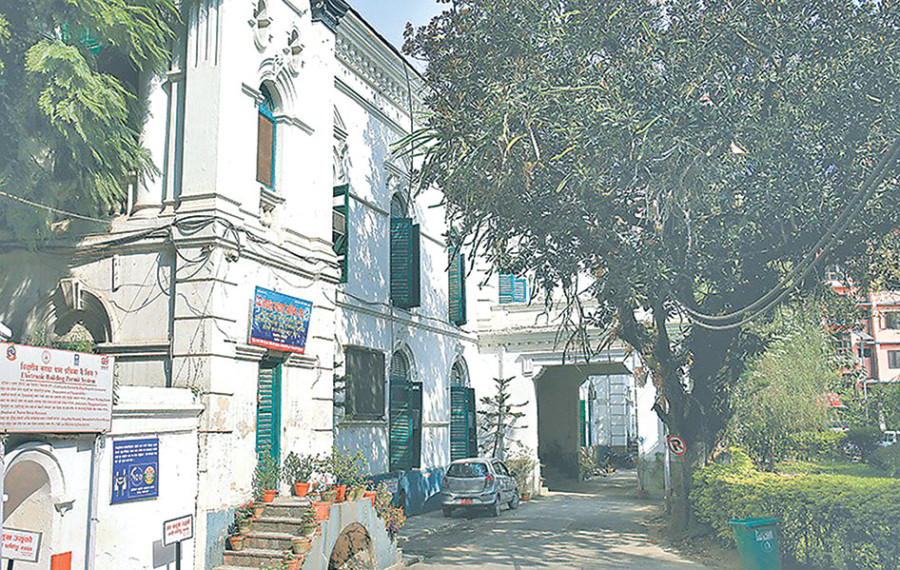Valley
Metropolis approves plan to demolish Bagdurbar
The Department of Archaeology (DoA) has approved Kathmandu Metropolitan City’s (KMC) plan to demolish the historic Bagdurbar.
Anup Ojha
The Department of Archaeology (DoA) has approved Kathmandu Metropolitan City’s (KMC) plan to demolish the historic Bagdurbar.
The department has revoked its earlier decision not to demolish the building.
The earthquake on April 25, 2015 extensively damaged the one and a half century old building, 200 metres south of Sundhara in the heart of Kathmandu.
The government has allocated a budget of Rs 50 million to the KMC to reconstruct Bagdurbar, but no work has been done so far besides the plan to demolish it.
In its technical report submitted in 2016, the department said retrofitting technique could restore the building. After inspecting it last October, the department informed the KMC not to demolish Bagdurbar for reconstruction.
A Non-Governmental Organisation, the National Society for Technology (NST) that works on reducing the risk of earthquake had last year proposed retrofitting Bagdurbar.
Replying to the Post query on why the department reversed its earlier decision, DoA Director General Bhesh Narayan Dahal said, “We gave permission to KMC to demolish the building because it had announced to rebuild the building in its original structure.”
Dahal’s reply contradicts his comment given to the Post on October 16 last year. He had then said, “The DoA will not allow the metropolis to demolish the structure”. He had backed his resolve then by despatching an official letter to the KMC to this effect.
The metropolis insists the cost of retrofitting is higher than rebuilding the structure.
KMC Spokesperson Gyanendra Karki told the Post, the building’s foundations are weak. “The building has to hold over 200 people, so just retrofitting may not make the building stronger.”
The metropolis says constructing a new building would take three years and cost Rs 1.5 billion.
“Our working guidelines say if the cost of retrofitting is higher than 30 percent, the building should be demolished and a new structure should be made. This is why we are demolishing the building,” said Karki.
Challenging Karki’s view, NST Senior Technical Advisor Surya Bhakta Sangachha said, “Our report shows there is not much damage to the foundation. Spending just 35 percent of the amount required to construct a new building can retrofit this historic building.”
Architect and former Dean of the Institute of Engineering, Pulchowk, Sudarshan Raj Tiwari, is against the government body’s decision.
“Even the Gaddi Baithak in Basantapur is retrofitted after the earthquake severely damaged it. Compared to it, Bagdurbar has less damage and can be retrofitted in less money and time,” said Tiwari.
Prime Minister KP Sharma Oli inaugurated the restored Gaddi Baithak on Wednesday. The National Reconstruction Authority (NRA) has started retrofitting the main building of Singha Durbar, the country’s central administrative hub. Tiwari and Sangachha say the metropolis and the department are taking this decision in haste because of lack of knowledge and importance of heritage sites.
KMC Mayor Bidya Sundar Shakya has pressed for demolishing Bagdurbar since the time he assumed office.
The metropolis functions from the historic building since 2004, during the tenure of Mayor Keshav Sthapit.
Historians refute Shakya’s claim that Bagdurbar is no longer in existence, and building in existence today is the Hari Bhawan.
The building, built on 121 ropanis, was handed to Nepal Government in 1839 after the demise of Bhimsen Thapa. The historic place got its name Bagdurbar from the time a Bengal tiger was kept there.




 12.12°C Kathmandu
12.12°C Kathmandu.jpg)










